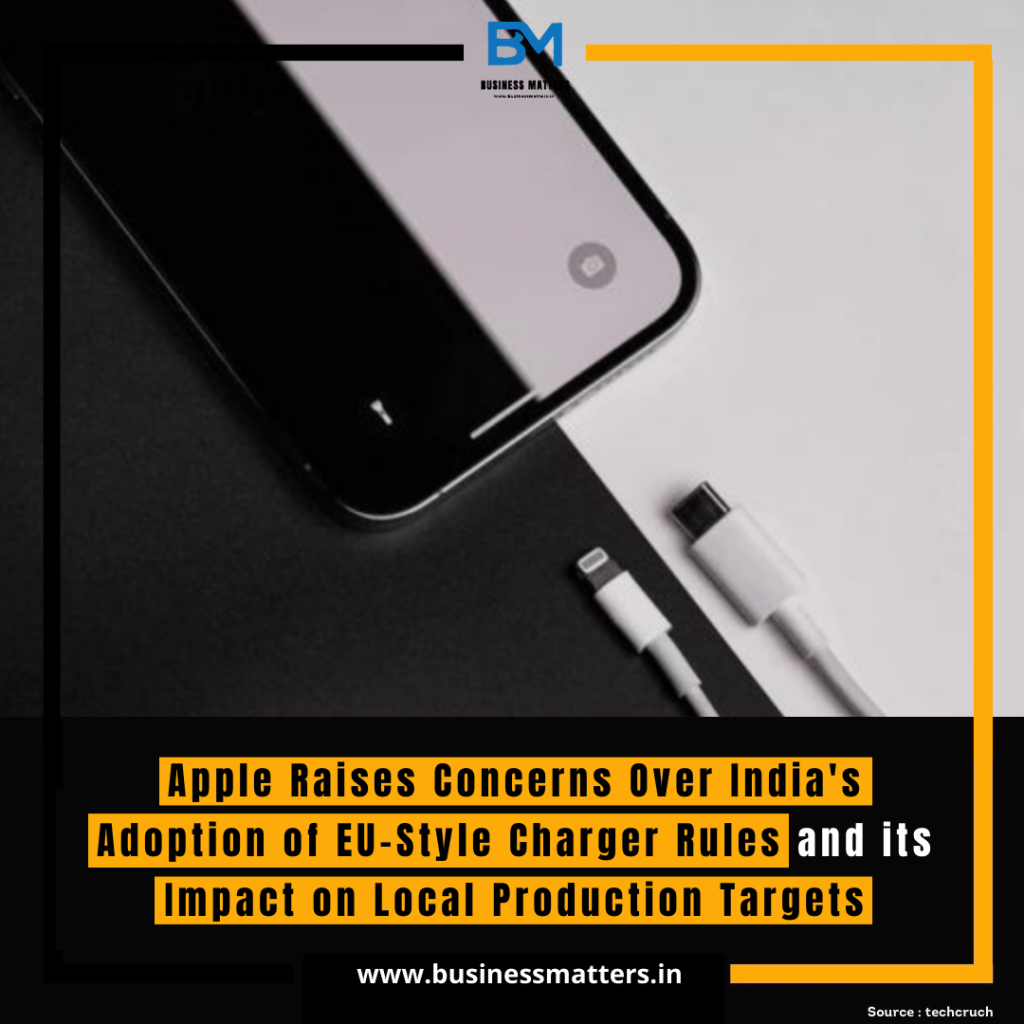In a move that could potentially impact Apple’s manufacturing goals in India, the tech giant has expressed reservations about the country’s plan to adopt European Union-style charger rules. The proposed regulations aim to standardize smartphone chargers to reduce electronic waste and enhance consumer convenience. However, Apple argues that this shift may pose challenges to its local production targets.
Background:
The European Union has been pushing for a universal charging standard for electronic devices for several years. The goal is to minimize the environmental impact of electronic waste by reducing the number of chargers discarded when users upgrade their devices. Apple, known for its proprietary Lightning connector, has been resistant to this standardization, citing concerns over innovation and consumer choice.
India, eager to align with global environmental initiatives and reduce electronic waste, has announced plans to adopt similar regulations. The move is expected to benefit consumers by ensuring compatibility among different devices and reducing the need for multiple chargers. However, Apple’s unique charging port design has led to apprehensions regarding its ability to comply with the proposed regulations.
Apple’s Concerns:
Apple has voiced concerns that aligning with the EU-style charger rules could disrupt its local production targets in India. The company has been actively investing in the country to bolster its manufacturing capabilities and meet the growing demand for Apple products in the Indian market. Any deviation from its existing charging standards might require substantial adjustments to its manufacturing processes, potentially leading to delays or increased costs.
The tech giant emphasizes the impact on its supply chain and the need for significant investments to accommodate the proposed changes. Apple has a considerable stake in India, with local manufacturing serving as a strategic move to benefit from the country’s vast consumer base. Any hurdles in meeting production targets could have repercussions on Apple’s market share and competitiveness in India.
India’s Perspective:
India, on the other hand, sees the adoption of a universal charging standard as a step toward environmental sustainability and consumer convenience. The government aims to reduce electronic waste and make it easier for consumers to charge their devices without the hassle of multiple chargers. The move is also expected to encourage other smartphone manufacturers to follow suit, fostering a more standardized and environmentally friendly approach to device charging.
Potential Resolutions:
To address the concerns raised by Apple, stakeholders may need to explore alternative solutions. One possible compromise could involve allowing the coexistence of a universal charging standard alongside proprietary connectors for a transitional period. This would give companies like Apple the time needed to adjust their manufacturing processes without jeopardizing their local production targets.
Conclusion:
The clash between Apple’s proprietary charging standards and India’s push for a universal charging solution reflects the challenges that arise when global companies operate in diverse regulatory environments. Striking a balance between environmental goals and the interests of tech giants is crucial for fostering innovation, ensuring consumer convenience, and meeting production targets. As discussions continue, finding common ground will be essential to navigate the complexities of this evolving landscape.


